A common Mycena found growing in clusters on well rotted wood with distinctive cross or toothed gills. It can be found year round but is more likely to be found in Summer and Autumn.
Home / Mushroom Guide /
Common Bonnet
Common Bonnet
| Mushroom Type | |
| Common Names |
Common Bonnet (EN), Bonet (y) Coed (CY), Grzybówka Hełmiasta (PL), Rózsáslemezű Kígyógomba (HU) |
| Scientific Name |
Mycena galericulata |
| Synonyms |
Mycena rugosa |
| Season Start |
All |
| Season End |
All |
| Average Mushroom height (CM) |
8 |
| Average Cap width (CM) |
5 |
Please note that each and every mushroom you come across may vary in appearance to these photos.
Cap
Starting dark brown and rounded, becoming bell shaped with faded edges, finally becoming flat or upturned at the edges with a small umbo and fading in colour. Has striations on the top mirroring the gills underneath.
Gills
White, fairly widely spaced and sometimes having small gills or veins running at ninety degrees to the gills, rather like ladder rungs. These are not always present but can usually be found on slightly more mature mushrooms. Click on the photo to enlarge.
Habitat
Saprotrophic on woods, grows mainly on well rotted deciduous stumps, occasionally conifer stumps.
Spore Print
Off white. Broadly ellipsoid. You should scrape your spores into a small pile to get an accurate spore colour.
Frequency
Common.
Other Facts
One of the larger clustered Mycena, this mushroom is still small and insubstantial so we don’t really consider it for eating.
The name Mycena comes from the hats worn by the ancient Greek Mycenae.



 (44 votes, average: 3.84 out of 5)
(44 votes, average: 3.84 out of 5)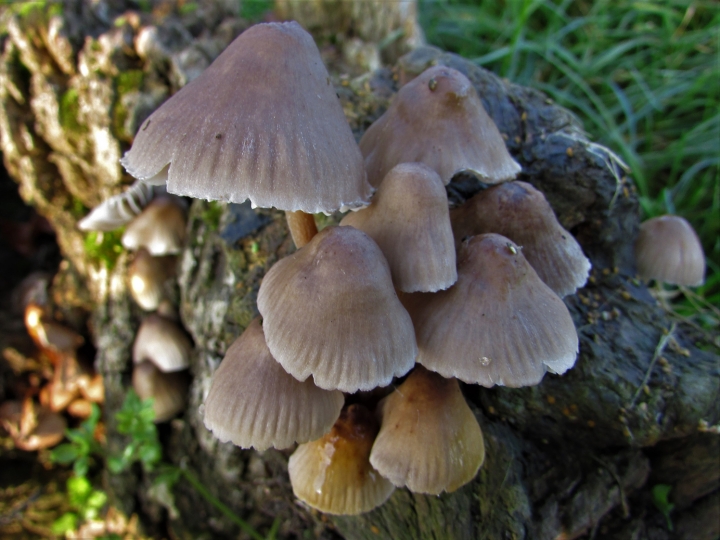
















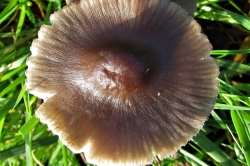
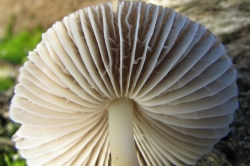
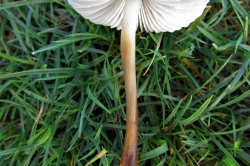
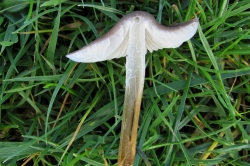
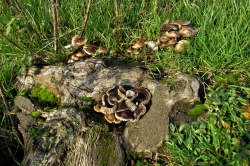
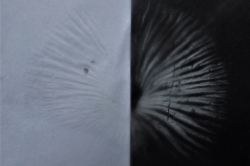






Leave a Reply